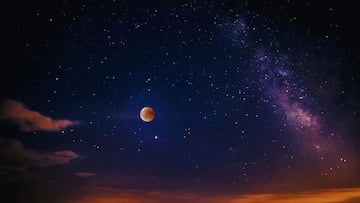Space
The James Webb telescope has captured a mysterious image of Uranus (the planet)
NASA has just unveiled an incredible picture of Uranus taken by the James Webb telescope, showcasing a rare season for the planet.

The James Webb telescope is the most powerful of its kind the world, a technological marvel that was launched on December 25, 2021 and showed us its first images on July 21, 2022. Since then, it’s continued to uncover space in ways never seen before, and this time it’s showing off the planet Uranus, the seventh in the solar system, the third largest and the fourth most massive, in a unique and surprising way. A mysterious image that highlights the planet’s rings, its moons, the storms that occur there, a seasonal polar cap...
The James Webb has been able to capture the inner and outer rings of Uranus, including the one known as the Zeta ring, the most diffused one of those close to the planet. Furthermore, it managed to capture many of the 27 moons that are known to surround the planet and even some smaller ones that are within the rings. A photo that shows us the immensity and all the mystery that surrounds our solar system, with planets that are always in our minds, but about which we really know little, but thanks to technological advances such as the James Webb telescope we can delve deeper into them.
James Webb and a unique photo of Uranus
The image captured by the James Webb telescope shows us a frozen world with varied atmospheric characteristics, among which the planet’s northern polar cap stands out. Additionally, several bright storms can be seen near and below the southern edge of the polar cap. A combination of seasonal and meteorological effects would be responsible for the frequency and location in which these storms appear in the planet’s atmosphere.
There is a lot of curiosity among the scientific community to see what will happen in the next solstice (moment in which the Sun is closest or furthest from one of the hemispheres), which will be in 2028 and we should see the changes that occur in the structure of Uranus and its complex atmosphere. A planet full of mystery, and in which due to its position, it has extreme conditions in which the Sun shines on one pole, and the other half of the planet spends 21 of our years in a harsh and dark winter.


